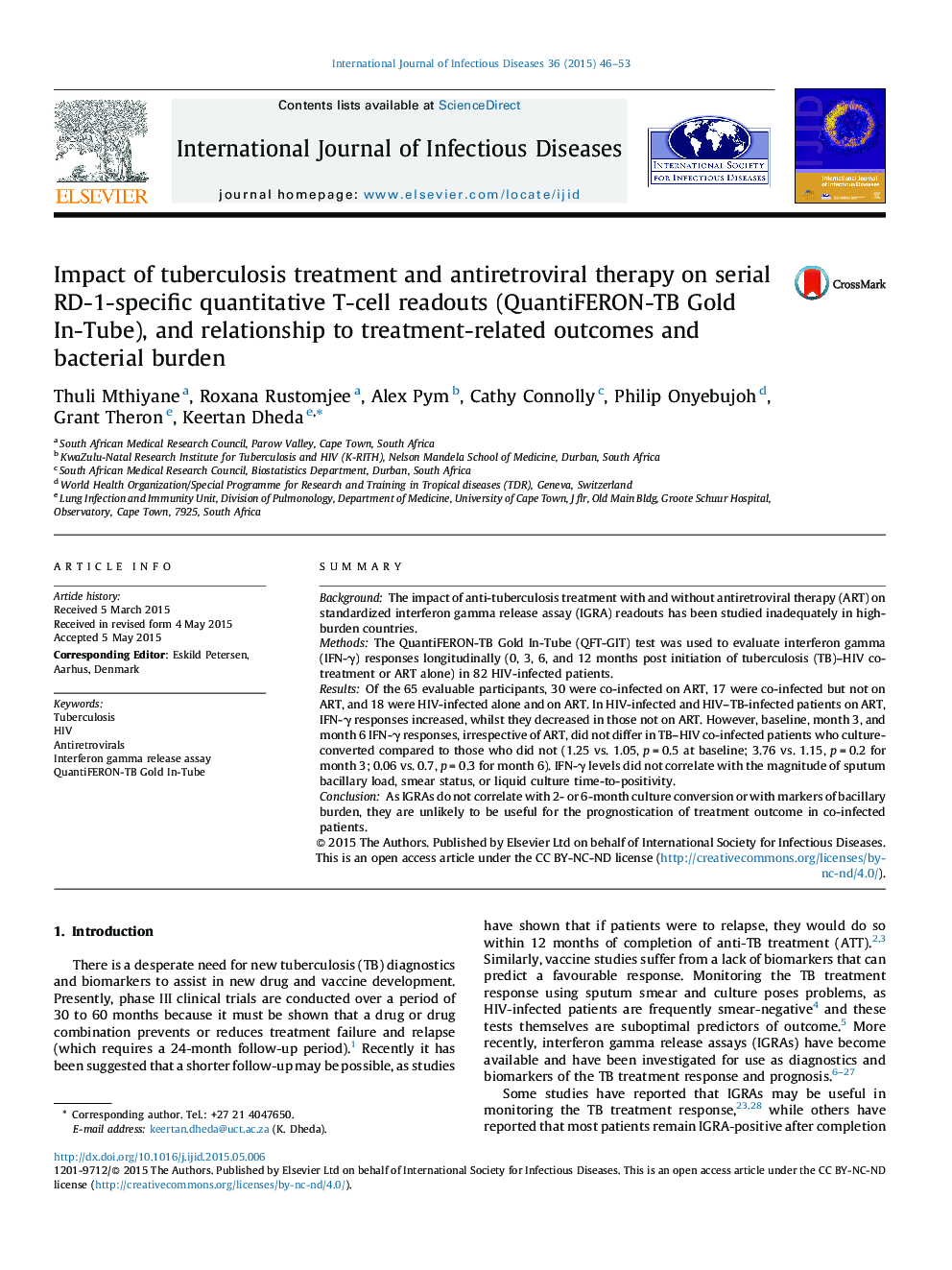| کد مقاله | کد نشریه | سال انتشار | مقاله انگلیسی | نسخه تمام متن |
|---|---|---|---|---|
| 3362258 | 1592059 | 2015 | 8 صفحه PDF | دانلود رایگان |

• QuantiFERON-TB Gold In-Tube readouts generally decreased with time during anti-TB treatment, irrespective of whether or not patients were on antiretroviral therapy.
• However, interferon gamma release assay (IGRA) responses did not correlate with 2- or 6-month culture conversion or markers of bacillary burden.
• Therefore, IGRAs are unlikely to be useful for the prognostication of treatment outcome in co-infected patients. These findings require confirmation in larger studies.
SummaryBackgroundThe impact of anti-tuberculosis treatment with and without antiretroviral therapy (ART) on standardized interferon gamma release assay (IGRA) readouts has been studied inadequately in high-burden countries.MethodsThe QuantiFERON-TB Gold In-Tube (QFT-GIT) test was used to evaluate interferon gamma (IFN-γ) responses longitudinally (0, 3, 6, and 12 months post initiation of tuberculosis (TB)–HIV co-treatment or ART alone) in 82 HIV-infected patients.ResultsOf the 65 evaluable participants, 30 were co-infected on ART, 17 were co-infected but not on ART, and 18 were HIV-infected alone and on ART. In HIV-infected and HIV–TB-infected patients on ART, IFN-γ responses increased, whilst they decreased in those not on ART. However, baseline, month 3, and month 6 IFN-γ responses, irrespective of ART, did not differ in TB–HIV co-infected patients who culture-converted compared to those who did not (1.25 vs. 1.05, p = 0.5 at baseline; 3.76 vs. 1.15, p = 0.2 for month 3; 0.06 vs. 0.7, p = 0.3 for month 6). IFN-γ levels did not correlate with the magnitude of sputum bacillary load, smear status, or liquid culture time-to-positivity.ConclusionAs IGRAs do not correlate with 2- or 6-month culture conversion or with markers of bacillary burden, they are unlikely to be useful for the prognostication of treatment outcome in co-infected patients.
Journal: International Journal of Infectious Diseases - Volume 36, July 2015, Pages 46–53